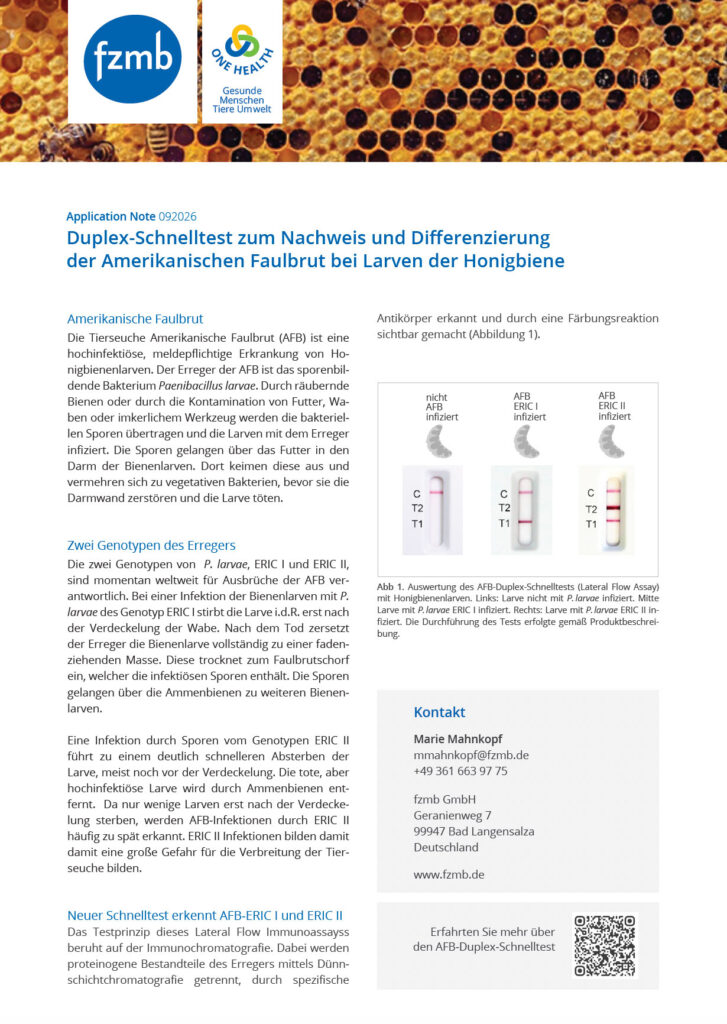American foulbrood bee disease
American foulbrood (AFB) is a highly infectious disease of bee larvae that leads to death. A quick and simple test of dead larvae on site provides immediate clarity as to whether an infection with American foulbrood is present. This offers the opportunity to initiate rapid countermeasures in the event of an AFB infection and prevent the spread of the infection.
The rapid tests currently available on the market only detect one of the two dangerous pathogen forms, the ERIC I genotype, but not ERIC II. P. larvae ERIC I infections lead to the typical foulbrood symptoms, in which the brood “rots” into a stringy mass after capping. However, honey bees are also infected with the pathogen P. larvae genotype ERIC II with the same frequency. This kills the larva even before capping. As a result, the bee disease AFB is often not recognized in cases of infestation by the ERIC II genotype. This in turn favors the spread of the disease. American foulbrood infections are transmitted from one bee colony to the next, endangering entire populations.
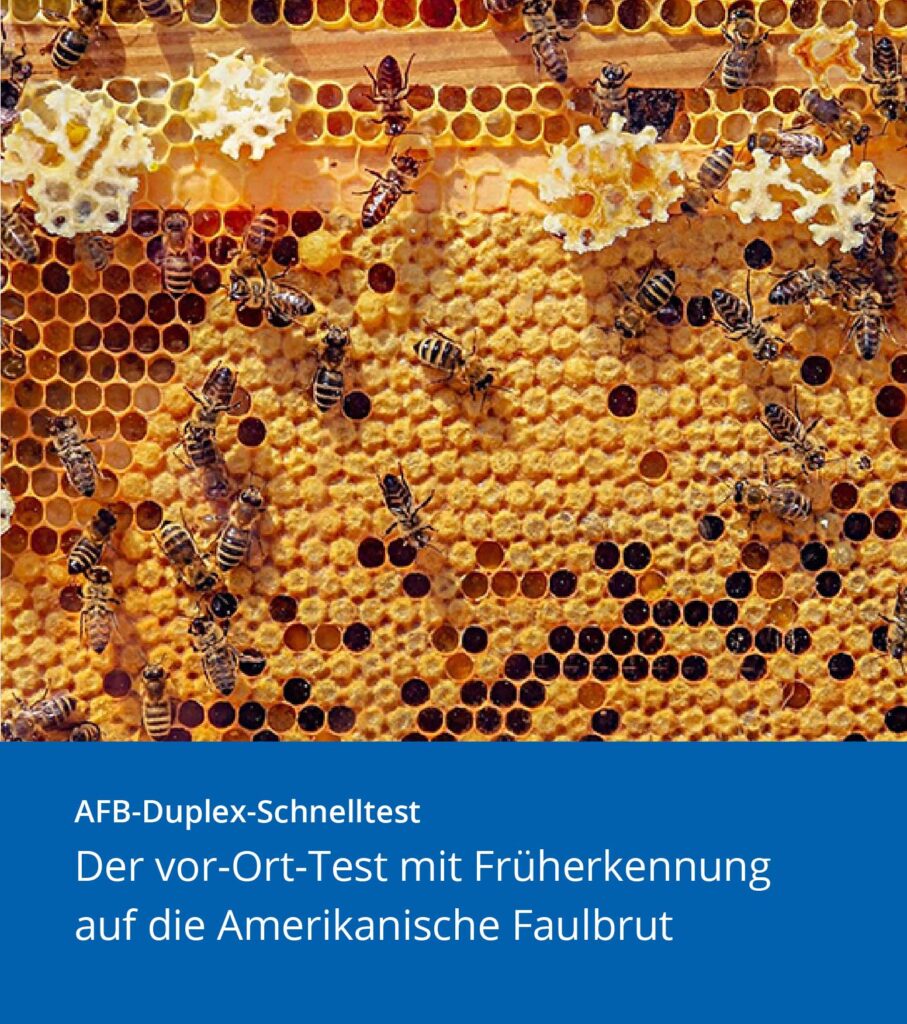
New AFB duplex rapid test: Detection provides certainty
We have developed a new detection method for American foulbrood in collaboration with the State Institute of Apiculture. The AFB duplex rapid test quickly and reliably detects whether bee larvae have been infected by the American foulbrood pathogen. In addition, the AFB duplex rapid test makes it possible to differentiate which genotype of the American foulbrood pathogen is responsible for the infection of the bee larvae. Unlike other tests, this test also detects symptom-atypical infections.
This allows control measures against malignant foulbrood to be initiated quickly and prevent the infection from spreading to neighboring bee colonies.
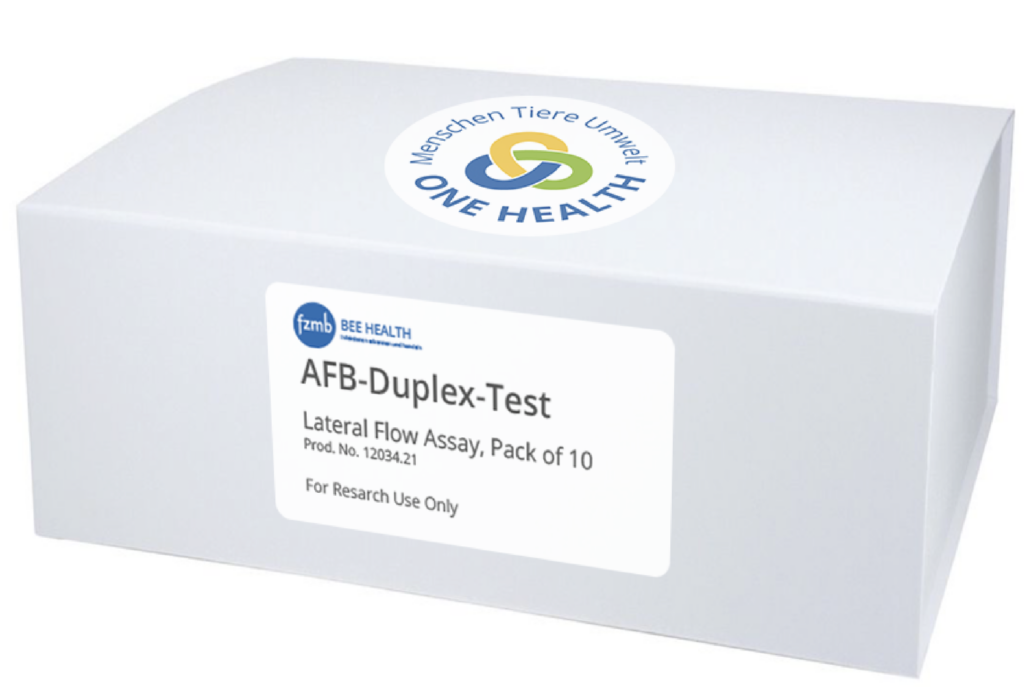
Advantages of the AFB duplex rapid test
- On-site detection on the bee colony
- Differentiation of AFB infection
- Quick and easy to implement
- Early detection of American foulbrood
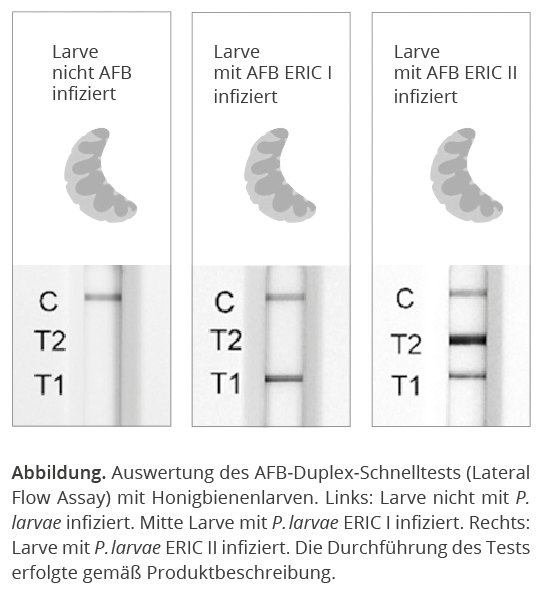
Overview The AFB duplex rapid test in use
Simple testing of bee larvae
The AFB duplex rapid test (lateral flow assay) works like the well-known corona rapid tests. A suspicious, dead bee larva is required as a test sample. If this has died due to an infection with American foulbrood, the rapid test allows detection within 15 minutes (see illustration).
The AFB duplex rapid test in use
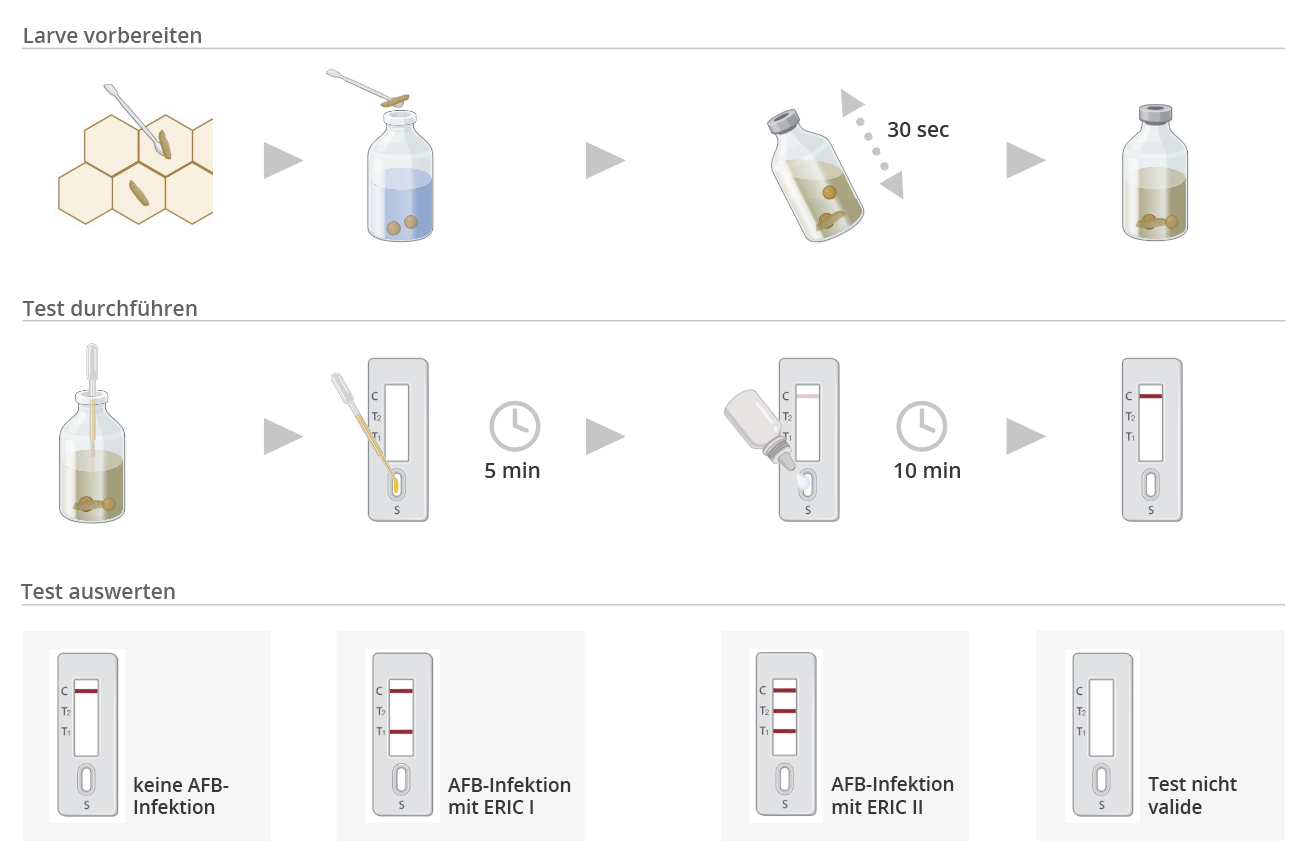
Why do larvae have to be tested (and not swab samples)?
Unfortunately, it is not possible to detect the pathogen in American foulbrood from swab samples (e.g. from the comb). The vegetative (= living-active) form of the pathogen, P. larvae, is found exclusively in the larvae of honey bees. Each of these vegetative bacteria forms a spore, an extremely resistant form of survival. Up to 2.5 billion of these so-called endospores are formed per bee larva. Only the spores of the pathogen occur outside the larva. If the larva ingests spores of P. larvae, e.g. via contaminated food, these germinate in the larva to form a reproducing bacterium and the cycle begins anew. Pathogen detection of spores(testing of feed samples) is only possible through very complex laboratory diagnostics and not by means of a rapid test.
Background knowledge
The pathogen that causes American foulbrood
The pathogen that causes American foulbrood (AFB) is the spore-forming bacterium Paenibacillus larvae. The highly infectious spores germinate exclusively in bee larvae but not in the adult animals. The germinated spores develop into bacteria, which multiply rapidly and lead to the death of the bee larvae. If an infection with the AFB pathogen is not detected in time, the deadly infection can quickly spread to neighboring bee colonies and also to wild honey bees. For this reason, American foulbrood (also known as malignant foulbrood) is not only a notifiable animal disease, but also requires immediate control measures.
ERIC I and ERIC II are different types of AFB pathogens
There are different types of the American foulbrood pathogen. To be more precise, there are four different genotypes. Two of these genotypes are dangerous for bees and therefore clinically relevant. These genotypes of the spore-formingPaenibacillus larvae , which are lethal to bee larvae, are called ERIC I and ERIC II. The two genotypes ERCI I and ERIC II occur worldwide and with the same frequency.
Infection of the bee brood with one of the two genotypes leads to the death of the bee larvae. However, infection of a larva with ERIC II pathogens leads to a faster and stronger outbreak of the disease without the symptoms typical of ERIC I (e.g. stringy mass of rotten brood). This means that an ERIC II infection is either detected late or even remains undetected, thus facilitating the spread of the disease.
Current rapid tests only detect AFB pathogen variant ERIC I
According to the studies of Benjamin Saville1 and supported by current studies of the LIB2, the immunological rapid tests available on the market only detect the ERIC I genotype, but not ERIC II. However, as both genotypes occur to the same extent worldwide, an infection of bee larvae with the ERIC II pathogen of American foulbrood is often only detected when the infection has already spread considerably.
1 Saville, Benjamin Grayham. 2011. Differentiation of Virulent and Biological Control Paenibacillus larvae Strains Associated with American Foulbrood in Bee Hives. PhD thesis, University of York.
2 LIB: State Institute of Apiculture. Prof. Dr. E. Genersch
Reliable AFB detection of both pathogen variants
The AFB duplex test for ERIC I + ERIC II enables quick and easy detection of a possible infection or exclusion of an infection of bee larvae by American foulbrood. However, it is necessary to test for both pathogen variants as genotype ERIC I and genotype ERIC II.
Why do larvae have to be tested (and why not swab samples)?
Unfortunately, it is not possible to detect the pathogen in American foulbrood from swab samples (e.g. from the comb). The vegetative (= living-active) form of the pathogen, P. larvae, is found exclusively in the larvae of honey bees. Each of these vegetative bacteria forms a spore within itself, an extremely resistant form of survival. Only these spores occur outside the larva. If the larva ingests spores of P. larvae, e.g. via contaminated food, these germinate in the larva to form a bacterium capable of reproduction and the cycle begins anew. Pathogen detection of spores is only possible through very complex laboratory diagnostics.
Spore formation in the American foulbrood pathogen
The bacterium Paenibacillus larvaeis a spore-former. Spore formation enables bacteria to withstand extreme environmental conditions, for example. The active, vegetative bacterium forms a so-called endospore. These spores can survive extreme conditions such as heat (up to 120 °C), drought and lack of nutrients, sometimes for decades. Once the environmental conditions are favorable again, the spore germinates into a new, active bacterial cell.
Spore analysis of feed wreath samples
For the detection of Paenibacillus larvaespores, it is currently recommended to test forage crown samples in special diagnostic laboratories. The bacteriological examination of feeder samples for the pathogen of American foulbrood (AFB) is very labor-intensive and takes approx. 1-2 weeks.
